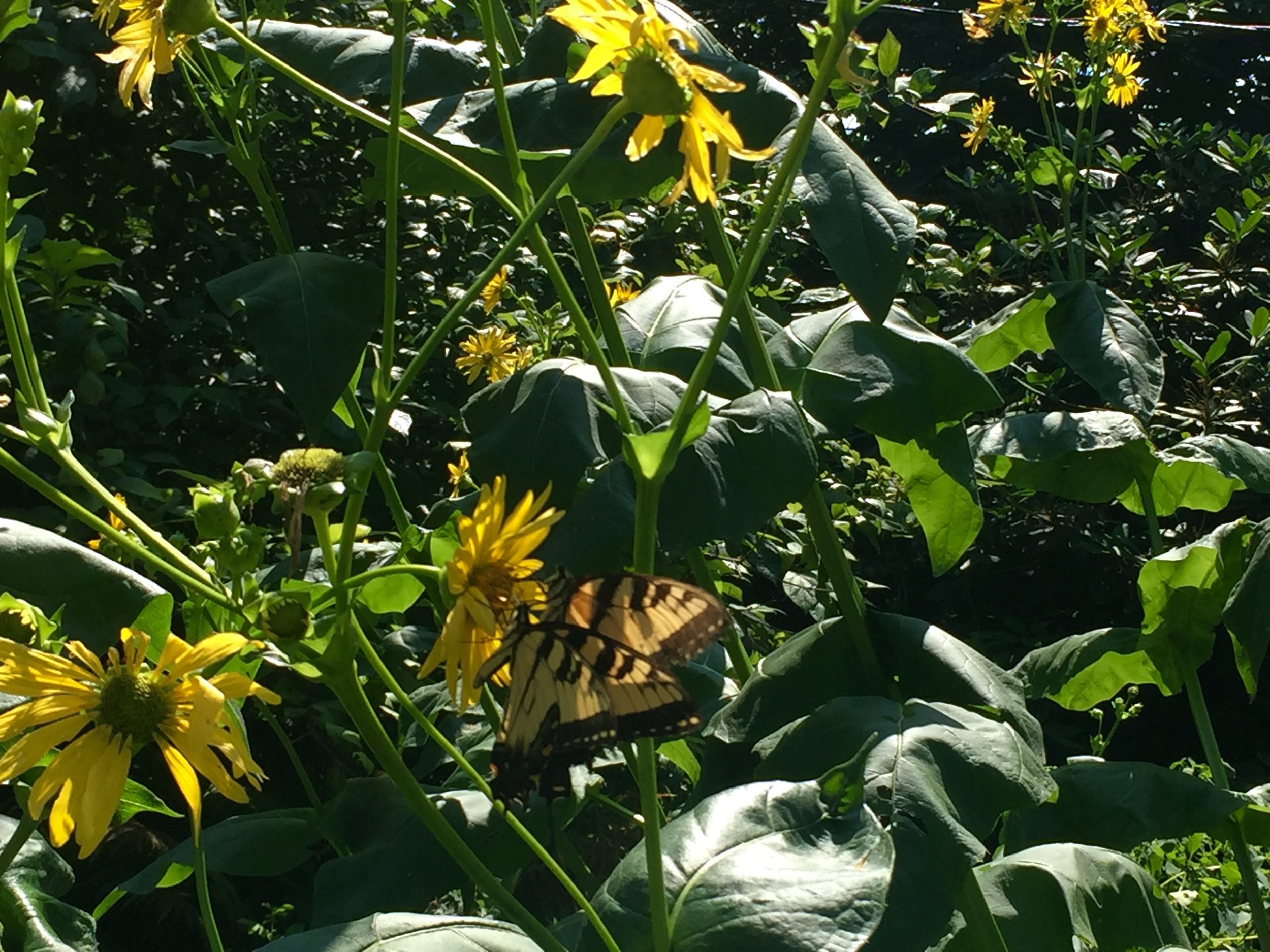When did you first notice a connection to nature?
That instinct to be outside, moving towards summer’s crickets, katydids and places with dense green trees and flowers buzzing with pollinators?
It started when I was young and slept with a pillow in our sunroom window casing to hear the night sounds. Over the years that connection has involved environmental activism, composting before it was popular, creating art, and these days spending many hours clearing invasive trees, vines, thorny shrubs and flowering plants from our land in Barnesville.
Why spend so much time digging, pulling, cutting and bagging all those persistent plants? I ask myself that after a hot day spent in our field removing persistent invasives these last couple of weekends. My sore and scratched hands, arms and legs look like I have arm wrestled with an armadillo. Of course Poison Ivy always finds me following one of these invasive, hands-on sessions, then the healing salve, Aleve and iced tea to the rescue.
The prevailing environmental theory is if you plant native species, the native bees, moths, butterflies, birds and bats will follow to interact with them. Doug Tallamy’s book, “Bringing Nature Home” is my bible on this subject. He has a wealth of information on what to plant for wildlife. “Oaks are the quintessential wildlife plant: No other plant genus supports more species of Lepidoptera, thus providing more types of bird food, than the almighty oak.”
There are two almighty oaks we planted 18 years ago, adjacent to that field, that were threatened by invasive vines. Now they are unhampered, free to grow and host all those moth and butterfly caterpillars.
This past weekend was wicked hot. After my husband, son and I spent another 8 hours cutting and clearing in that doggone field, I loaded a baby Sassafras tree that was growing in pot of compost, and looked for a good spot in the field. As soon as I started digging in a recently cleared spot, I encountered a warren of woody roots overlapping and extending 3-4 feet. At that point I was thinking maybe these invasive plants have won? I am beat. But I looked at the happy Sassafras seedling and decided to cut, dig and pull those woody roots out. That little native tree is now nestled in a bed of compost and broken twigs surrounding the circle, to help hold the rainwater in.
There is a Willow Oak and a Chestnut Oak in my compost, they also want a spot out there in the sunshine. So this weekend I will go to the field and endeavor to clear the remaining invaders with my husband and son.
This is where the real connection to nature happens for me. With my hands in the compost pile, with crickets, katydids and birds calling to each other, tending and creating space for my pollinators. They are in a drunken stupor, happily feeding in other garden beds near my art studio.

